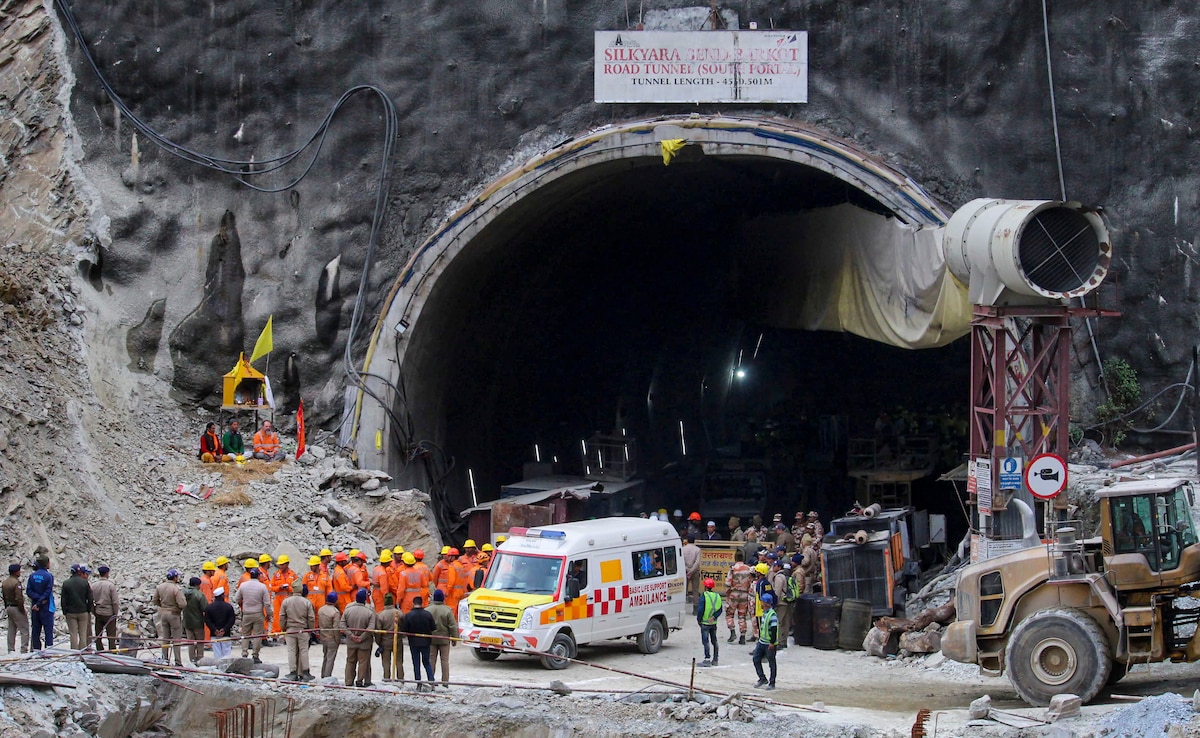
The tunnel in question is a 4.5 km-stretch between Silkyara and Dandalgaon towns in Uttarakhand (File).
New Delhi:
In light of difficulties faced in the rescue of 41 workers trapped in an Uttarakhand tunnel since November 12, an expert from the Indian Institute of Technology in Delhi told NDTV of the need for guidelines to “correctly assess rock and sediment type before starting construction of a tunnel”.
Dr Jagdish Telangrao Sahu, a member of a high-level government committee tasked with framing rules for the design, construction, and maintenance of tunnels, also stressed on the need for safety provisions, such as escape tunnels, at all stages of such projects, for both workers and end-users.
“Tunnel construction (provisions) in India is not so developed at this moment… earlier tunnelling was not used to this extent, as it has in the past 15-20 years. It used to be mostly for hydropower projects but now it is used for railway projects or for building highways,” Dr Sahu explained.
READ | Trapped Uttarakhand Tunnel Workers Rescued After 17-Day Operation
“And, unlike hard rock in South India, Himalayan rocks (like those being dug out to build the Silkyara tunnel in Uttarkashi district) are consolidated sediment where tunnelling is treacherous,” he said.
“Two aspects are important during construction of tunnel. Before digging, collect information through site investigation, non-destructive testing, or bore holes. Second is design aspect, which we do with New Austrian Tunnelling Method. If you do it through this… you keep taking feedback.”
According to Dr Sahu, this means that if there is loose rock in some part of the construction site, for example, the design for that section is immediately modified. “Feedback loop is necessary in tunnelling… which is not being followed in current construction practice,” he said.
“We should have feedback because not all problems will come to light immediately. As you tunnel, you come to know which rocks are there… so you need feedback mechanism. In some place, you may find it is weak rock or there may be water seepage. You need to have proper site investigation.”
A site investigation, Dr Sahu said, referred to a detailed examination of rocks and other geological features at a proposed tunnelling or construction site. “We have to see what stress there is… is there water table or aquifer that will allow water to flow through tunnel (because a tunnel acts as a channel for ground water to flow… like a river)? To prevent all this we need site investigation.”
Earlier too, experts told NDTV of the need for a serious rethink on infrastructure in Himalayan regions, which “comprises soft rocks in general and only in patches, are there hard (and) stable rocks…” Dr Sudhir Krishna, the former Secretary of the Union Urban Development Ministry, said.
“I have been in Silkyara. The rocks there are closely spaced. The zone where this collapse has taken place is a shear zone, meaning the rocks are weak and broken,” Dr Charu Pant, a geologist, said.
READ | Soft Rocks, Sinking Ground: Experts Flag Challenges In Tunnel Rescue Op
On what could have caused the Uttarakhand tunnel collapse, Dr Sahu said there were several possible reasons, including defects in design or construction. “It could even be a freak accident.”
“There are many aspects to this… why this has happened. Was it avoidable? What stage did the mistake, if there was mistake, happen? This is why a committee has been formed,” Dr Sahu said.
The tunnel in question – a 4.5 km-stretch between Silkyara and Dandalgaon towns – is part of the government’s ambitious (and controversial) Char Dham project, a national highway plan to connect Badrinath, Kedarnath, Gangotri, and Yamunotri. The project runs through 529 landslide-prone areas.




